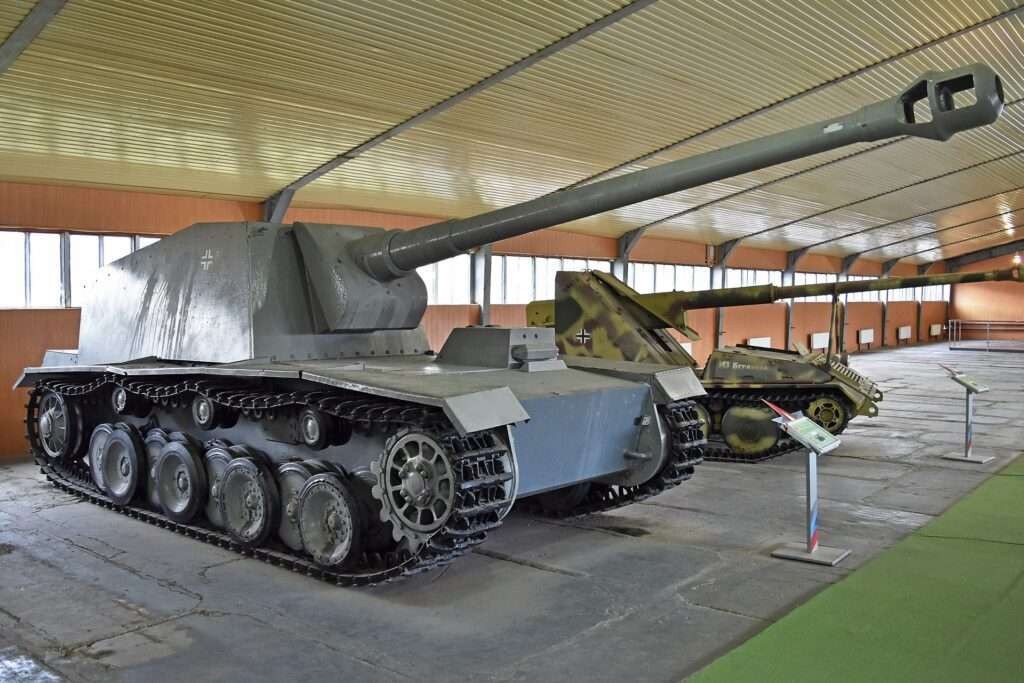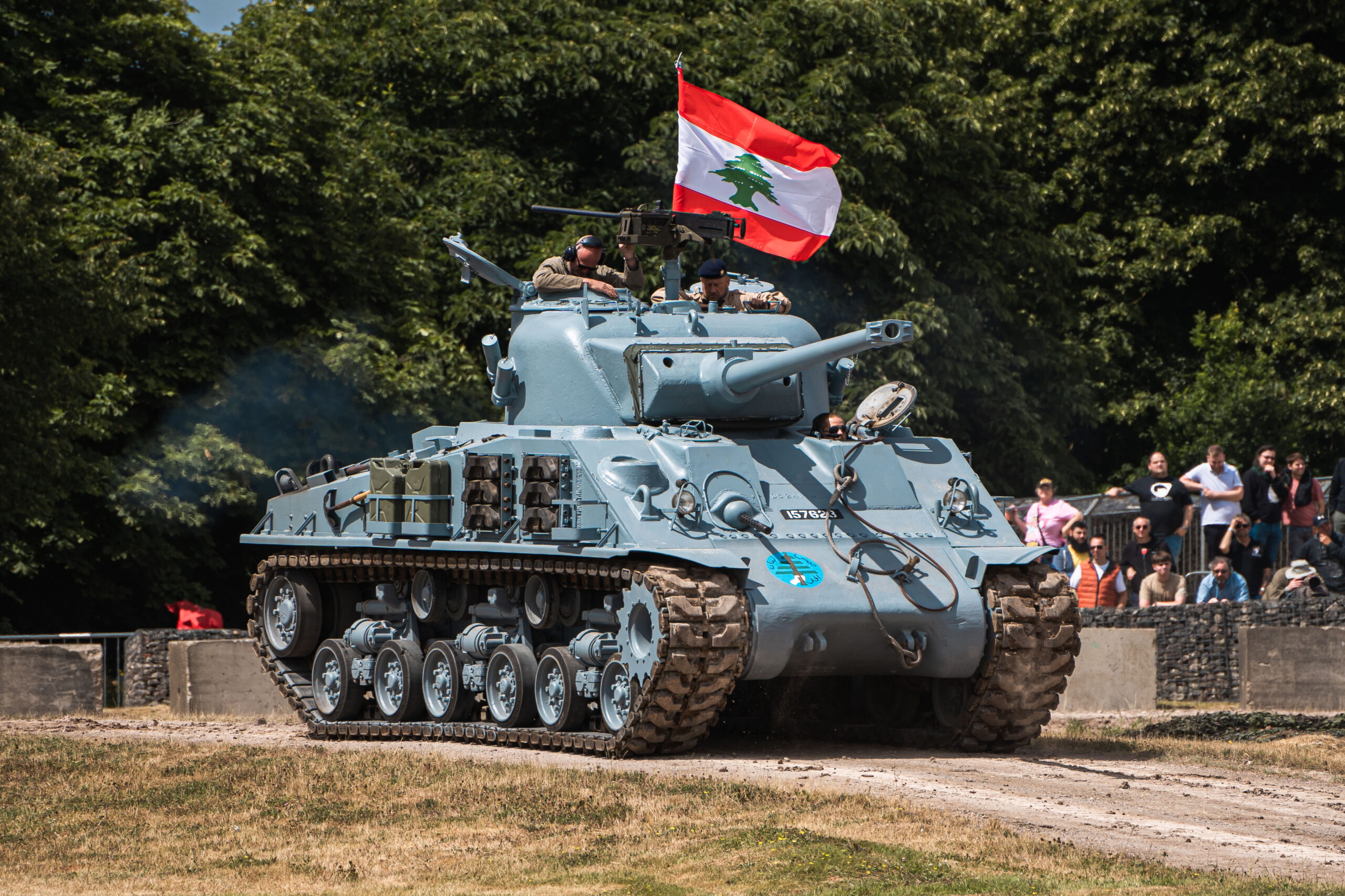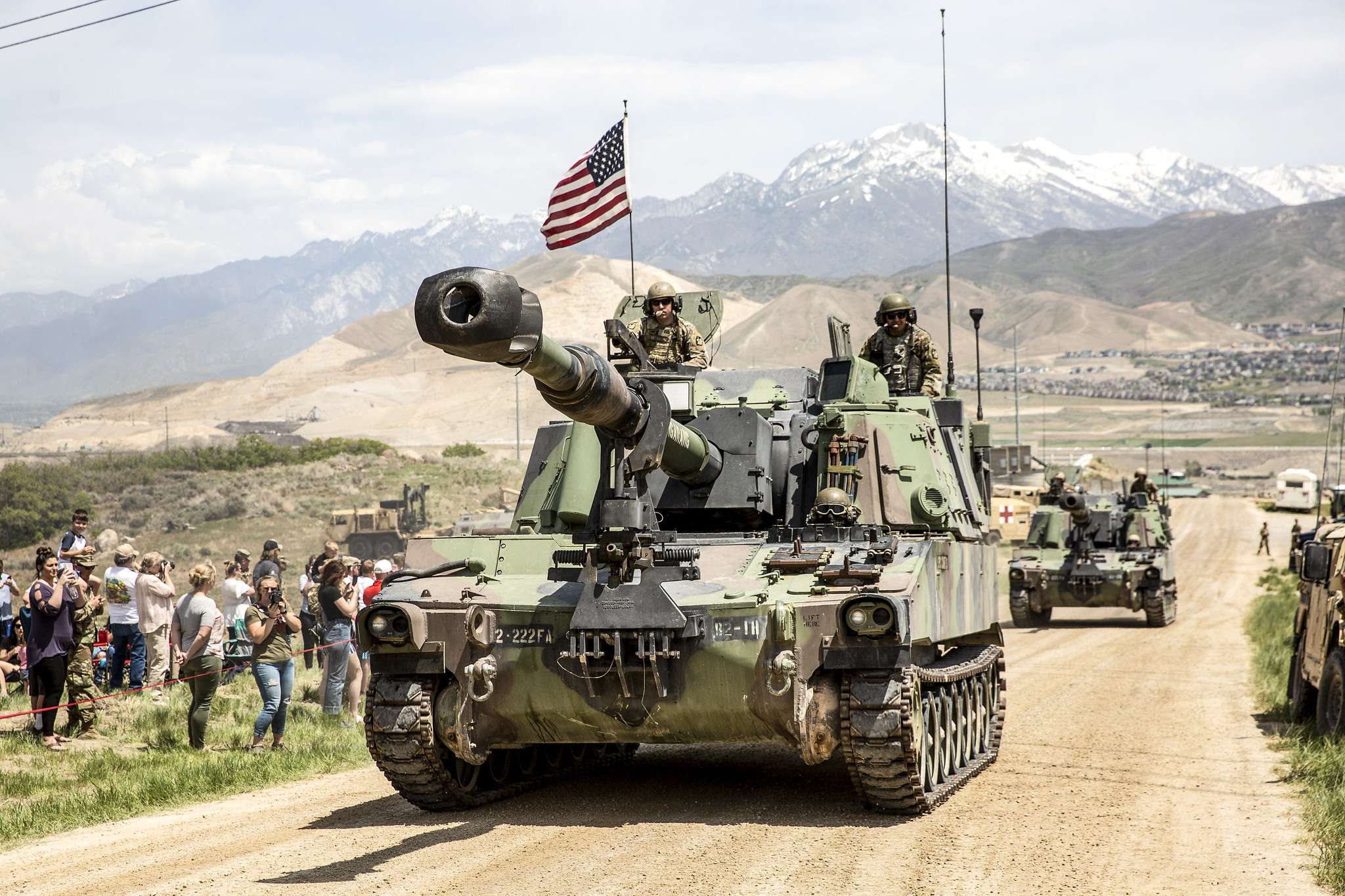The SU-14 is an enormous Soviet self-propelled gun from the 1930s that has an extremely unusual shape; one that resembles are large barn. Made famous by the game World of Tanks, it actually started out as an open topped vehicle, with the armor being added later on when it was converted into a direct-fire assault gun. Only two were made, with just one surviving today.
The SU-14 was an absolutely massive machine. Built using components from the T-28 and T-35 multi-turreted tanks, it was one of the few Soviet vehicles of the era capable of carrying 250 mm and larger weapons.
However, its size and weight meant it was slow and unreliable, showing very poor performance during its trials.
Today one example still survives, and is located at the Kubinka Tank Museum in Russia. It is often stated that three were built in total, named the SU-14-1, SU-14-2 and SU-14-BR-2. However in reality only two were built, which were the SU-14 (the first example) and the SU-14-1 (the second example). Both vehicles were later modified, which caused this confusion.
Contents
Background
At the start of the 1930s the Soviet Union was starting to mechanize its artillery forces. Prior to this artillery had usually been pulled behind a truck or an animal, such as a donkey or horse. However these methods were slow, and could easily become bogged down in rough terrain.
By mounting an artillery gun on a tracked vehicle, it could cross much tougher terrain and keep up with advances and remain in range of the enemy.
The problem for the USSR when mechanising their artillery was that they lacked a tracked chassis big enough to mount the large calibre guns – such as 152 mm and 203 mm – used by artillery forces.
Two vehicles were under development at the time that could mount such weapons though; the T-28 medium tank and T-35 heavy tank. Both of these tanks were extremely large, multi-turreted vehicles, with the T-28 having three turrets, and the T-35 having five.

In 1933 a self-propelled gun built on the T-35’s chassis was drawn up. It was designated SU-7 (“SU” meaning “Samohodnaya Ustanovka”, or self-propelled mount). It could be fitted with a choice of three large weapons; 254 mm, 305 mm and 400 mm caliber pieces.
But around the same time came the SU-14, a self-propelled gun built on the T-28’s chassis using components from the T-35. It was developed at plant No. 185 in Leningrad, under the direction of lead designer P.N. Syachintov. The SU-14 was to be armed with the recently designed 203 mm B-4 howitzer, which could fire a 100 kg shell up to 11 miles.
SU-14
In May 1934 the first prototype for the SU-14 was completed. It was an enormous vehicle that had a crew of seven and weighed a hefty 48 tons. Its 203 mm B-4 howitzer was in an open configuration without any protection around the weapon, but the rest of the vehicle was covered by 10-20 mm of welded and riveted steel plates.
The T-28’s chassis had been reversed, with the engine now at the front and the gun mounted near the rear. The engine remained the same as the T-28’s; the 500 hp M-17 V12 petrol engine. The driver sat next to the engine in a small compartment at the front, while the rest of the crew worked at the rear. It borrowed some features from the larger T-35 too, like its spring suspension system.
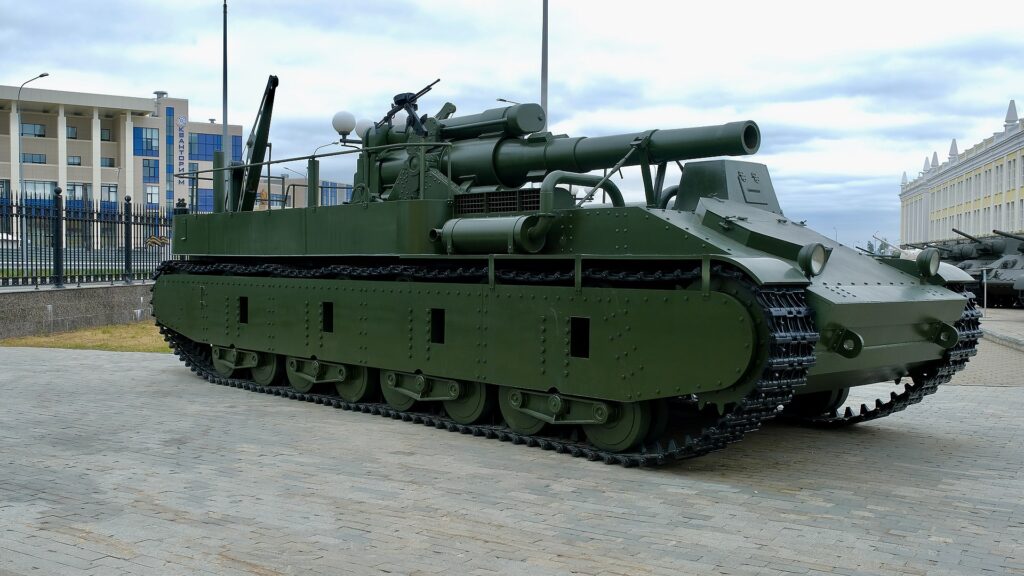
Two 200 kg cranes were fitted at the rear for lifting the huge 203 mm shells off the ground during the loading process.
While the SU-14 was completed by May 1934, it wasn’t ready for trials until July that year as some issues inherent in the T-28 (particularly with its transmission) were encountered. Also, by this point, the SU-14 was now required to be capable of carrying a choice of two guns; the original 254 mm B-4 howitzer, or the 152 mm B-10.
Read More Germany’s E100 Superheavy Tank that Weighed 136 Tons
In the latter half of 1934 the SU-14 underwent firing trials. Its performance was acceptable, but it had a slow firing rate of 10 rounds per hour, and its loading system did not function as intended. Even worse though, its mobility trials were a complete failure. The nearly-50 ton self-propelled gun had its 150 mile trial run cancelled as it arrived with broken tracks, a failing gearbox and overheating engine.

As a result, the SU-14 received a number of updates which aimed to improve its poor and unreliable mobility. These changes made some difference but didn’t address the main armament’s issues, and therefore was not a significant improvement over the first type during trials in 1935. The SU-14 could not be upgraded much further without significant redesigns, so that is exactly what happened.
In late 1934 it was decided that a new version would be built on the basis of the T-35, which was a much larger and more powerful vehicle that, in theory, was better suited to carrying large weapons.
SU-14-1
This next attempt was designated SU-14-1, the first prototype for which was completed in early 1936. It had many general improvements, but the most important changes were related to its drivetrain and running gear. An updated gearbox, brakes, clutches and recoil spades were fitted, as well as a more powerful variant of the M-17 engine which now produced 680 hp.
The side armor over the suspension was also reduced from 10 to 6 mm, lightening the vehicle and further improving mobility. It could reach a top speed of just under 20 mph. However during trials in 1936 a large list of problems were once again discovered, indicating that the vehicle was in no way ready for service.
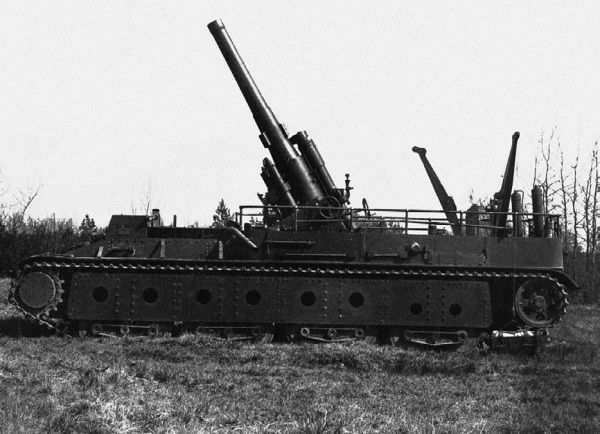
Bizarrely, the SU-14-1 had already been accepted for service in 1935, after the previous SU-14 had received its upgrades. This was not the first of such occurrences relating to Syachintov’s designs, and as a result was recognised as an “enemy of the people”. He was arrested on December 31, 1936 and executed on May 6, 1937.
This essentially killed the SU-14 project on the spot, with little more work being done aside from the first vehicle being rearmed with a 152 mm B-30 gun in 1937.
The project was officially cancelled in 1938, and the two prototypes were left in storage.
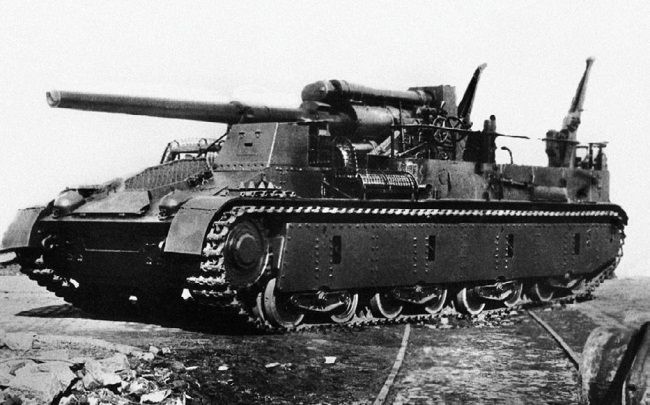
At the end of 1939 they suddenly became relevant again, due to the USSR’s rather unsuccessful invasion of Finland. The Soviets had come up against well-defended Finnish bunkers and fortifications, which they struggled to effectively eliminate. They desired large-caliber guns used in direct-fire against the bunkers, but lacked any vehicles capable of doing this without getting itself destroyed in the process.
Read More Vickers A1E1 Independent
As a result, the SU-14 and SU-14-1 were called up to be modified for use as bunker busters in Finland. Interestingly, this is the origin of the KV-2, which was also designed to counter Finnish bunkers. Both prototypes were to receive a fully-enclosed armored housing over the main armament, and both be fitted with the 152 mm Br-2 gun. They were to be used in direct-fire engagements from distances of around 1,500 meters, so 50 mm of armor was necessary on the front.

Plant No. 185 received the two vehicles in January 1940, and the process of modifying them began. As the original SU-14 had been rearmed with the 152 mm B-30 gun, which was similar to the 152 mm Br-2, it was decided that its gun would not be changed. Meanwhile, the SU-14-1 had its 203 mm howitzer replaced with the 152 mm Br-2.
Armor plating was applied all over the upper portions of the vehicle, creating a fully-enclosed casemate that was 50 mm thick on the front, 30 mm thick on the sides and 20 mm thick on the rear. The additional armor significantly improve the SU-14’s protection, but it increased its weight to 64 tons. Its speed dropped to around 15 mph at best on road, and a dire 5 mph off-road.
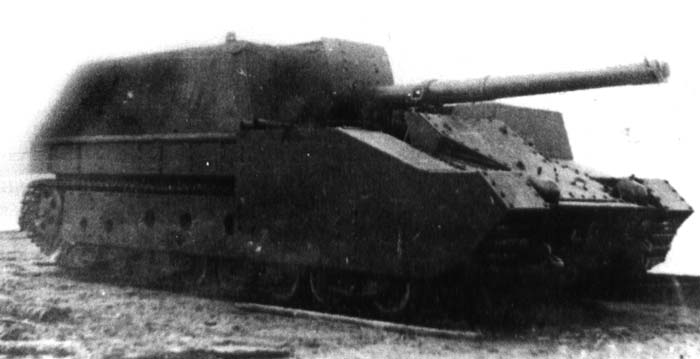
This armored version is the version of the SU-14 people are most familiar with, but by this point it was no longer a conventional self-propelled artillery, but a direct-fire assault gun.
Fate
The upgrades were not complete until mid March 1940, by which point the Winter War had ended and the need for a bunker buster significantly diminished. However, the USSR was still likely to encounter bunkers in the future, so it continued on with testing the SU-14 and SU-14-1. They were used, along with the SU-100Y, in trials against ex-Polish bunkers.
The SU-14 was found to be a stable platform for firing, but the running gear was still an issue during trials. The vehicles were transported to the NIBT Proving Grounds near Moscow before the end of the year. It is often reported that the SU-14, SU-14-1 and SU-100Y were then used in the defence of Moscow after Germany invaded the Soviet Union.

Due to their proximity to the city this may have indeed happened, but no concrete evidence has yet been produced that solidly shows their presence during the battle.
Read More The Radioactive ISU-152 at Chernobyl
None of these vehicles entered production, and as a result saw rather minimal use throughout the rest of the war. When the war ended they remained at the Kubinka testing ground, and eventually found their way into the tank museum that was established there. Sadly, the first SU-14 was scrapped in the 1960s. Fortunately though, the SU-14-1 survives, and can be seen at the museum today, along with the SU-100Y.
